Hollywood, 1939… Amid the glitz and the glitter of a bustling young movie town at the height of its Golden Age, the Hollywood Tower Hotel was a star in its own right; a beacon for the showbusiness elite. But something is indeed about to happen that will change all that…
When insiders first reported that the Hollywood Tower Hotel at Disney California Adventure would soon see its last elevators ascend into the Twilight Zone, it felt like a total impossibility; unthinkable! Nonsensical! In a park themed to the Golden Age of California, the Twilight Zone Tower of Terror was a star in its own right: a new classic, tailor-made for the 21st century park and an integral element of its billion-dollar rebirth!
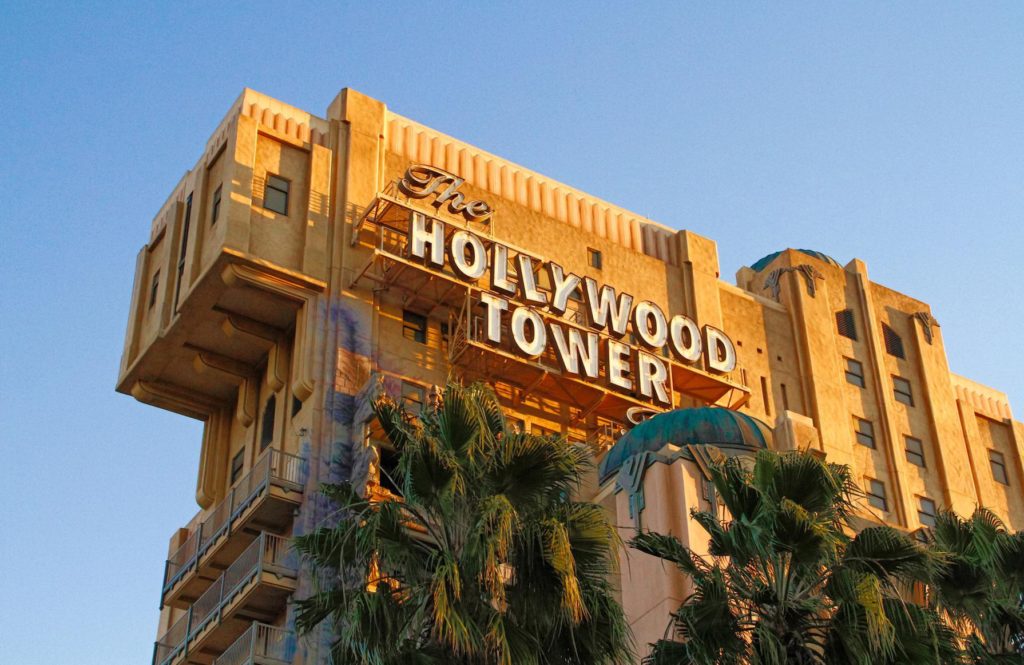
Submitted for your approval: the curious case of The Twilight Zone Tower of Terror, a headlining attraction borrowing from a Walt Disney World original, twice abandoned at Disney California Adventure. Equal parts subtle, thrilling, eerie, and brilliant, it served as an achor to a reborn park and a fan favorite. Only Disney’s greatest minds could’ve concieved it, and barely a decade after its opening, their Tower was toppled… Here’s how it came to be, then flickered out of existence forever.
It’s a tale so unbelievable with such an unimaginable twist ending, it can only be a story told from the outer reaches of… The Twilight Zone.
And before we head off, remember that you can unlock rare concept art and audio streams in this story, access over 100 Extra Features, and recieve an annual Membership card and postcard art set in the mail by supporting this clickbait-free, in-depth, ad-free theme park storytelling site for as little as $2 / month! Become a Park Lore Member to join the story! Until then, let’s start at the beginning…
Drop ride rewind
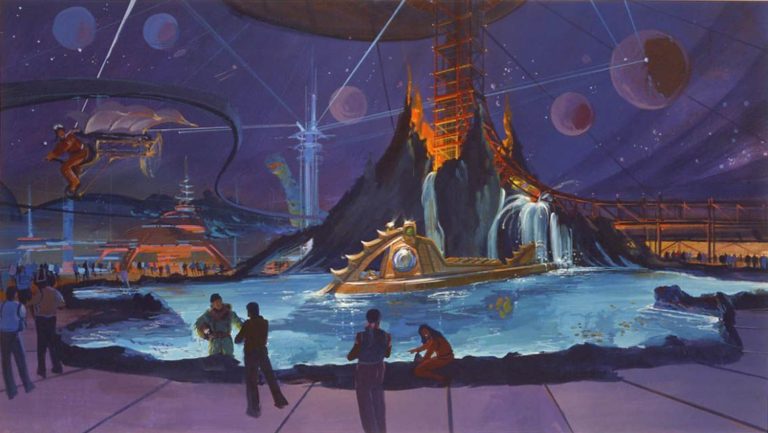
Imagineers’ dreams of a freefall drop thrill ride date back to the late ’80s and to the dawn of Michael Eisner’s “Ride the Movies” era. In pursuit of ambitious, expensive, and elaborate attractions that would draw thrillseekers to Disney’s long-stagnant parks, Imagineers explored incorporating a (rather rudimentary) first generation drop ride by Swiss manufacturer Intamin into the two parks on the horizon.
At Disneyland Paris, it would’ve been a red iron lattice tower build inside the spectacular never-built Discovery Mountain drafted as a Phase II expansion of the European park. In fact, this Journey to the Center of the Earth-themed thrill would’ve hoisted guests up and out of Discovery Mountain before plummeting through a volcanic splashdown in an indoor bay.
Obviously, Disneyland Paris’ opening ended up being a landmark for all the wrong reasons, leading to decades of cop-outs, cancellations, and closures… including Discovery Mountain.
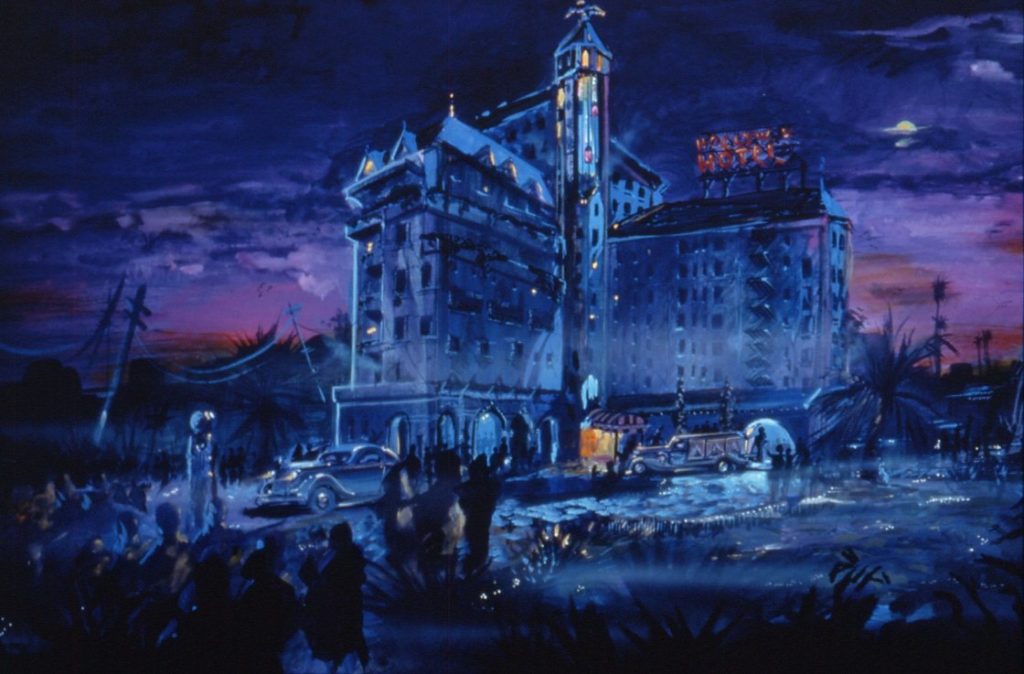
Still, the idea of incorporating a simple but effective freefall into Disney Parks didn’t die. The ride was still a contender for the new Disney-MGM Studios Theme Park in Orlando, where a lack of things to do was one of the park’s major sticking points.
When abandoned plans for a Mel Brooks dark ride through a haunted hotel merged with the lingering needs for more outright thrills, the concept of a Tower of Terror was born (even if, initially, it would’ve been a simple, off-the-shelf Intamin ride with its distinctive L-shaped drop and runoff):
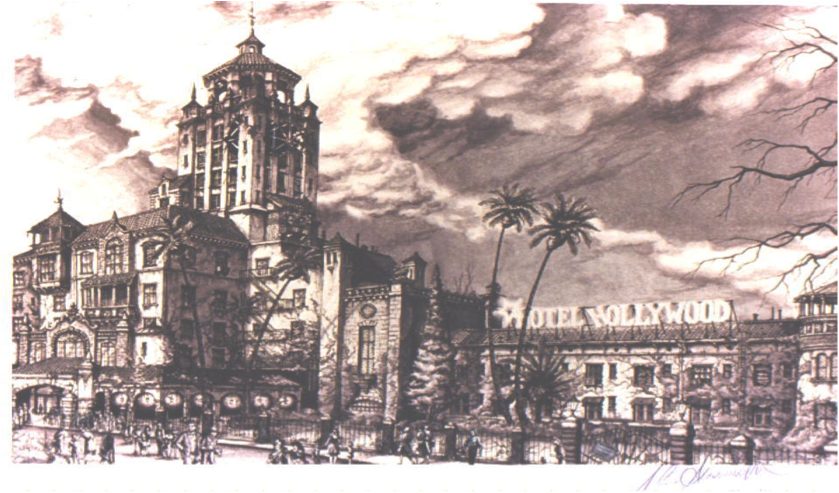
Just as it was Eisner’s call for cinematic thrills that had sparked the concept, it was his willingness to look outside of Disney’s own intellectual property catalogue that secured the story. By licensing the rights to the eerie, otherworldly, and chilling sci-fi-fantasy 1950s anthology series The Twilight Zone from CBS, Disney secured a way to add some cinematic splendor to their ride, to celebrate a landmark American television series, and to add horror to the Studios’ celebrated genres.
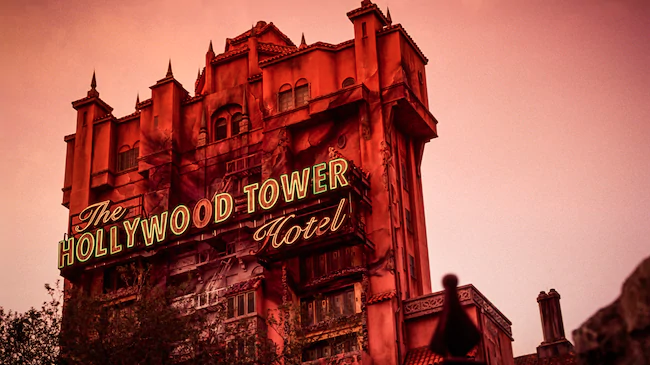
The Twilight Zone Tower of Terror opened in 1994 at the Disney-MGM Studios. An absolutely pinnacle of Imagineering in the era and a decade-defining attraction, the ride expertly fused Disney storytelling with an incredible ride technology (trackless AGVs – autonomous guided vehicles – that travel between VVCs – vertical vehicle conveyance elevators) and established a new standard for immersive, cinematic attractions.
If you haven’t already, this is when you’ll want to make sure you rewind to our Modern Marvels: The Twilight Zone Tower of Terror feature to explore not only the in-depth story of the making of Orlando’s original ride, but the experience within and how it works… Consider it “Part I” of this “Part II” West Coast-focused entry.
Still on board? Excellent. Because the story of the Twilight Zone Tower of Terror picks up shortly after the debut of the ride in Orlando.
Geyser Mountain
The opening of the Twilight Zone Tower of Terror in 1994 had taken Disney Imagineering to the next level. It had also armed Imagineers with a ride system that ticked every box for a must-have, and plans quickly developed for the AGV / VVC ride system to make its way to the original Disneyland in California and – at last – Disneyland Paris. How?

Disney’s mountain ranges are legendary the world over, and given the boost in the ’90s, a new peak was nearly added… In fact, Geyser Mountain was a concept that had been floated in many forms over the years, but the 1994 introduction of the Tower of Terror bolstered the concept, which was reportedly planned for Frontierland at both Disneyland in California and Disneyland Paris.
In a surprisingly simple retrofit of the Hollywood Tower Hotel’s basic structure and showbuilding, Geyser Mountain would bring the sought-after AGV / VVC ride system to life, looming over the red desert rocks of Big Thunder Mountain.
Aboard mine elevators, guests would descend into the peak to view some of the glorious natural wonders that recent drilling had revealed: endless unexplored caves, crystal-lit caverns, bubbling geysers, and more. Of course, when a wayward, “Ole Unfaithful” geyser erupts at precisely the wrong time, it would send the deep-earth elevator blasting skyward.

Of course, this incredible concept would’ve inverted the Tower of Terror formula (launching guests rather than dropping them), but it would’ve gifted Walt’s original park with a new age wonder that would expertly fuse a storytelling dark ride with a monumental thrill, just as Tower of Terror had!
And boy, was Disneyland going to need a headliner…! After all, the brand new Disney’s California Adventure was just a few years from opening. All expectations were that attention would shift to the new park as guests gravitated to its “hip, edgy, MTV attitude,” leaving dusty old Disneyland a ghost town. Geyser Mountain would be just the thing to reinvigorate Disneyland after California Adventure’s record-breaking debut!
Then, the new park actually opened…
Disney’s California Misadventure
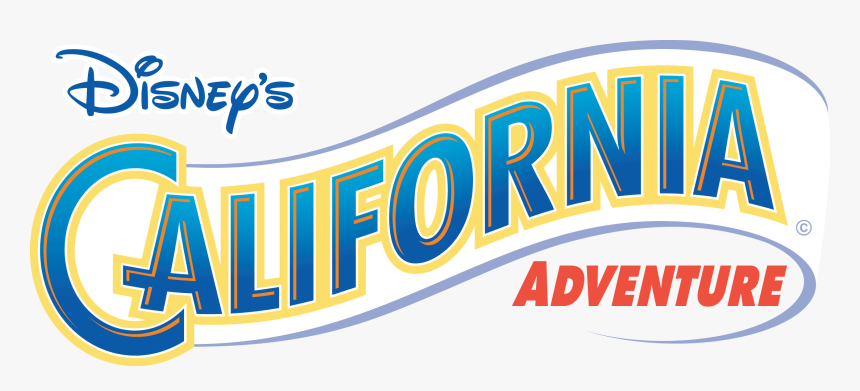
When Disney’s California Adventure opened in 2001, it was met with… well… chilly reception. Word of mouth was so negative that in the park’s debut year – when interest should’ve been at its height – 5 million guests visited. That sounds impressive until you hear that the original Disneyland just across the plaza saw 12.3 million in the same year… Put another way, of all the people who visited Disneyland, not even 40% bothered to check out the brand new park next door. Of those who did visit in 2001, only 20% reported being “satisfied” or better in exit polling.

Why did people dislike the new park? We detailed it all in a walkthrough of the creatively-starved park for our in-depth Declassified Disasters: Disney’s California Adventure feature that tells the full story, but in short, it lacked Disney characters; it had practically no rides outside of the off-the-shelf carnival rides of Paradise Pier; and worst of all, guests disliked the “hip, edgy MTV attitude” that executives had expected to be the park’s calling card.
Instead of being a celebration of the Golden State through romanticized, historic lands (Disney’s forte), it offered a stark, comical, spoof flavor of modern Californian culture. For example, you’d expect any park celebrating California to feature a land based on Hollywood, probably following in the immersive, detailed, historic footstops of Disney-MGM Studios’ own Hollywood or Sunset Blvds.
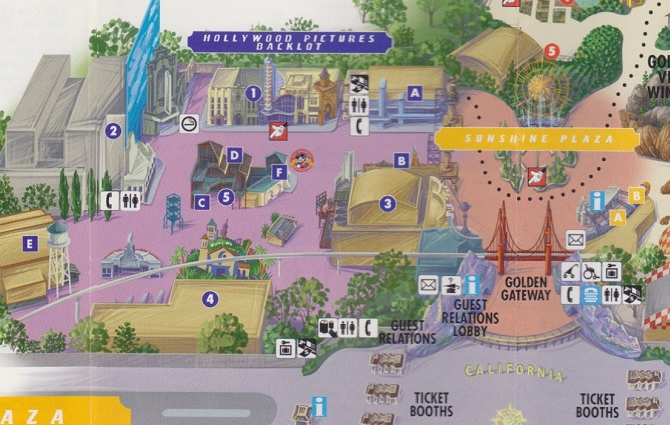
But California Adventure instead offered the Hollywood Pictures Backlot. Rather than an idealized recreation of historic Hollywood, the land was a backlot set of Hollywood with flat facades, scaffolds, and modern puns born of the TMZ paparazzi era of the early 2000s. It’s only ride was the Declassified Disaster: Supersar Limo – a ride so bad, it closed because the park was better off with no ride there than with it.
As for Geyser Mountain? Suddenly, it was clear that Disneyland Park did not need the boost that an E-Ticket drop ride would bring… California Adventure did. And Disney Imagineers knew exactly which ride could make it happen.


